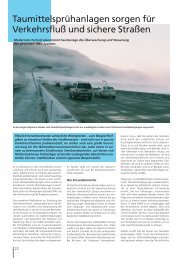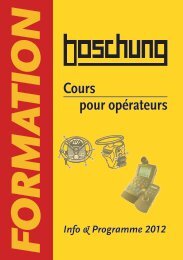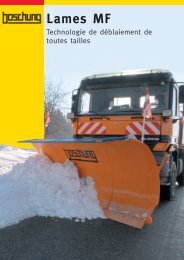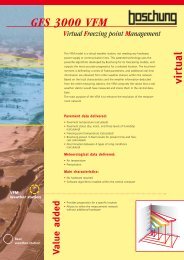Physical bases of freezing point measurement using ... - Boschung
Physical bases of freezing point measurement using ... - Boschung
Physical bases of freezing point measurement using ... - Boschung
You also want an ePaper? Increase the reach of your titles
YUMPU automatically turns print PDFs into web optimized ePapers that Google loves.
Proceedings <strong>of</strong> the 9 th SIRWEC Conference 15-17 March 1998, Luleå, Sweden 283<br />
computation (13) <strong>of</strong> the salt content. Therefore it comes that the accuracy <strong>of</strong> active probes is<br />
better than that <strong>of</strong> passive ones.<br />
5. CONCLUSION<br />
The physical principles <strong>of</strong> the <strong>freezing</strong> <strong>point</strong> <strong>measurement</strong> by active and passive probes<br />
have been discussed. Whatever the deicing product may be (NaCl, CaCl2, MgCl2, ethylene<br />
glycol, etc.), the active probe measures truly Ts, with a good accuracy. The <strong>measurement</strong> <strong>of</strong><br />
this same parameter with a passive probe is less accurate. In addition, this kind <strong>of</strong> probe<br />
requires parametrizations <strong>of</strong> the s<strong>of</strong>tware and can require the use <strong>of</strong> meteorological data. By<br />
contrast, the passive probe is cheaper than the active one.<br />
ACKNOWLEDGMENTS<br />
The author would like to thank J. Heierli for helpful discussions and P. Francey for<br />
performing the <strong>measurement</strong>s <strong>of</strong> the cooling performances <strong>of</strong> the probe.
















